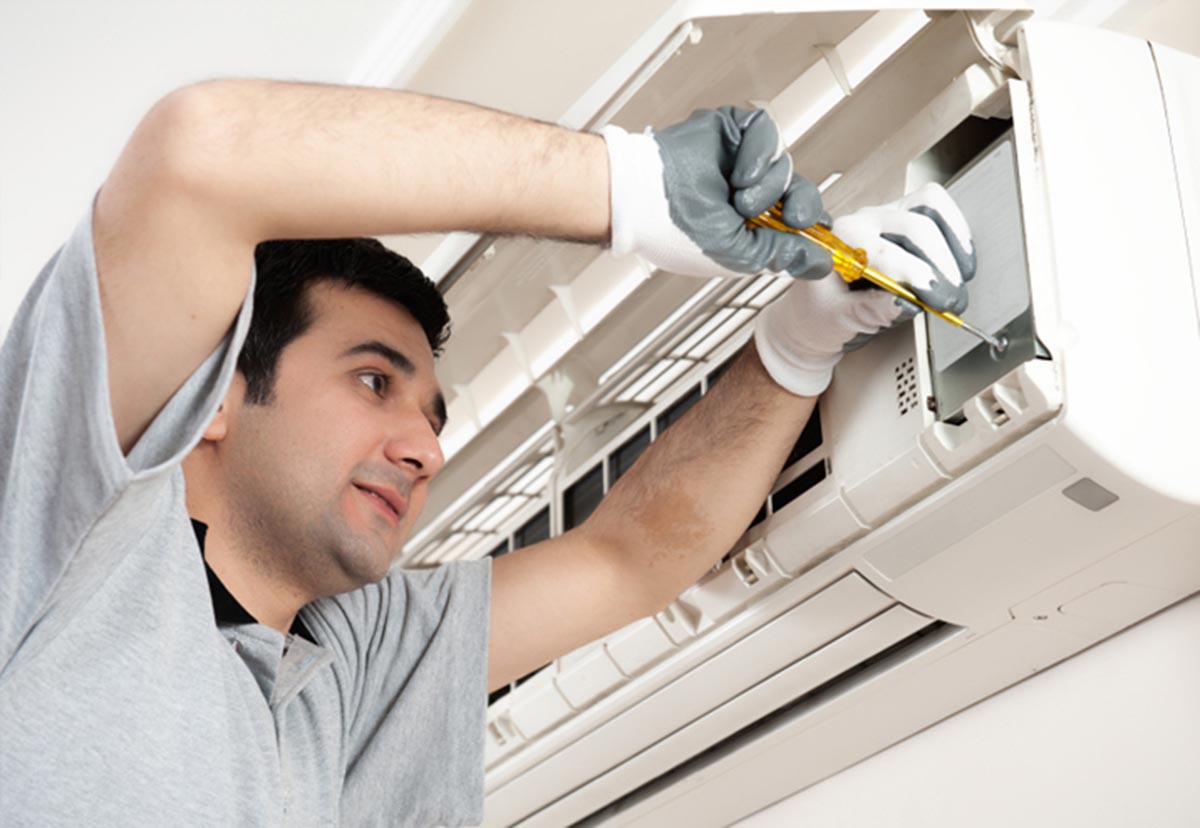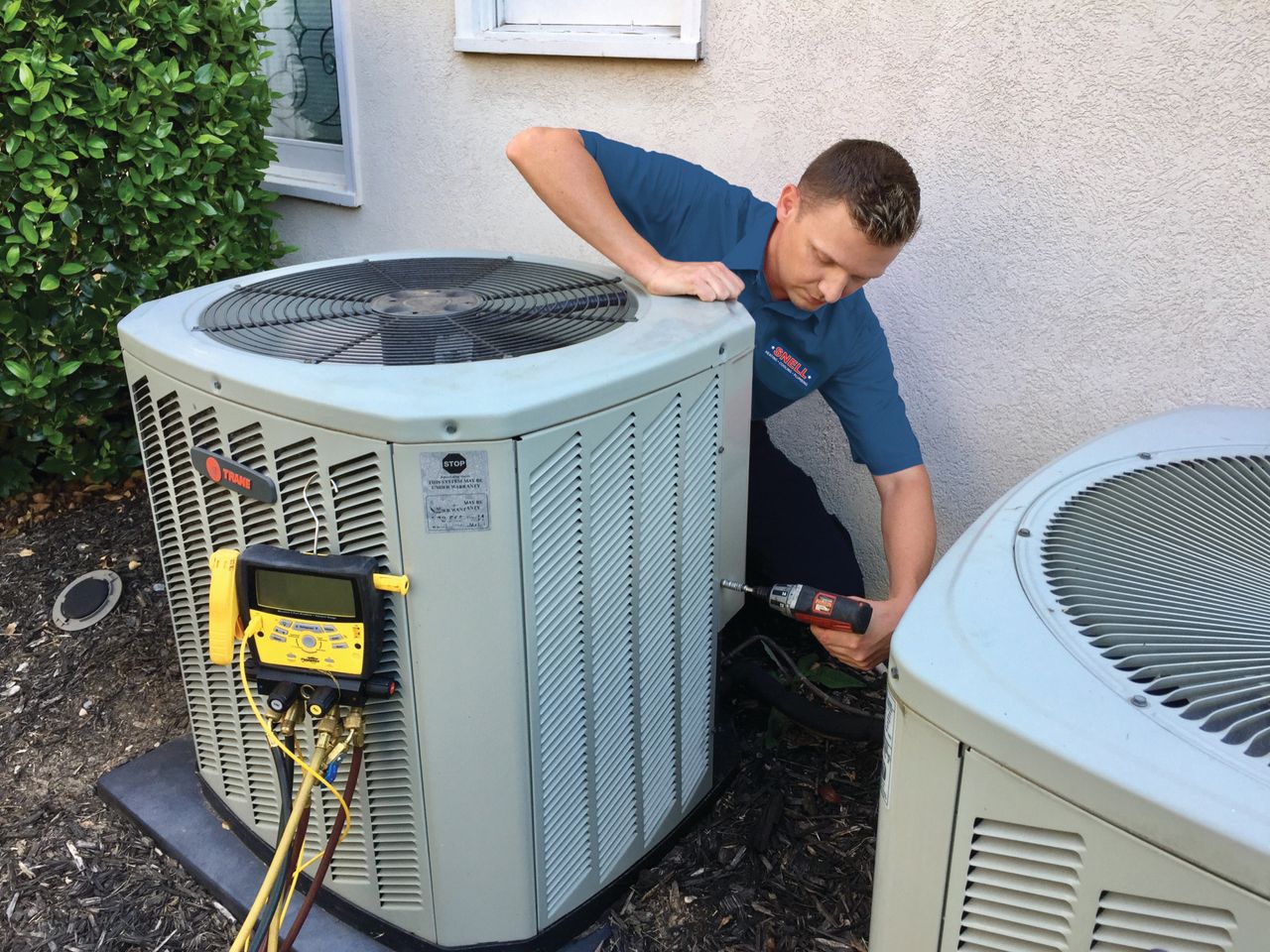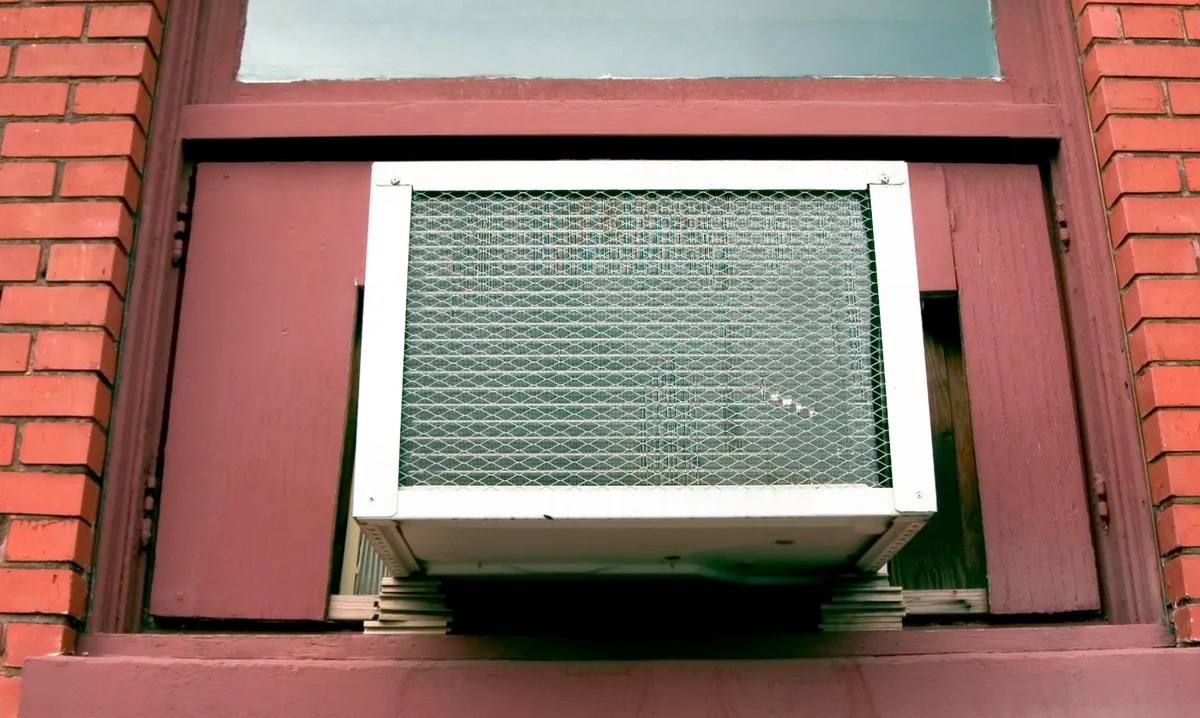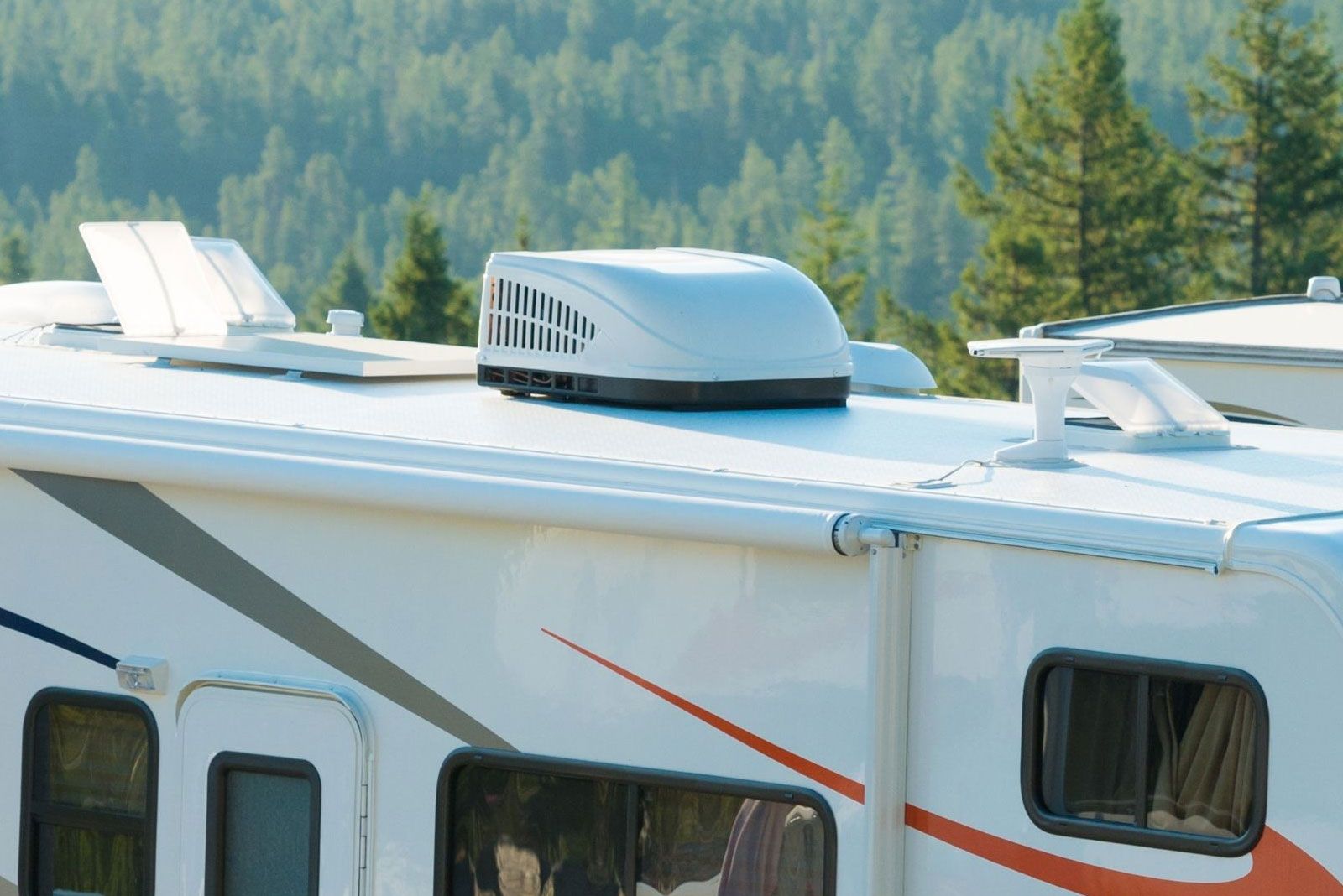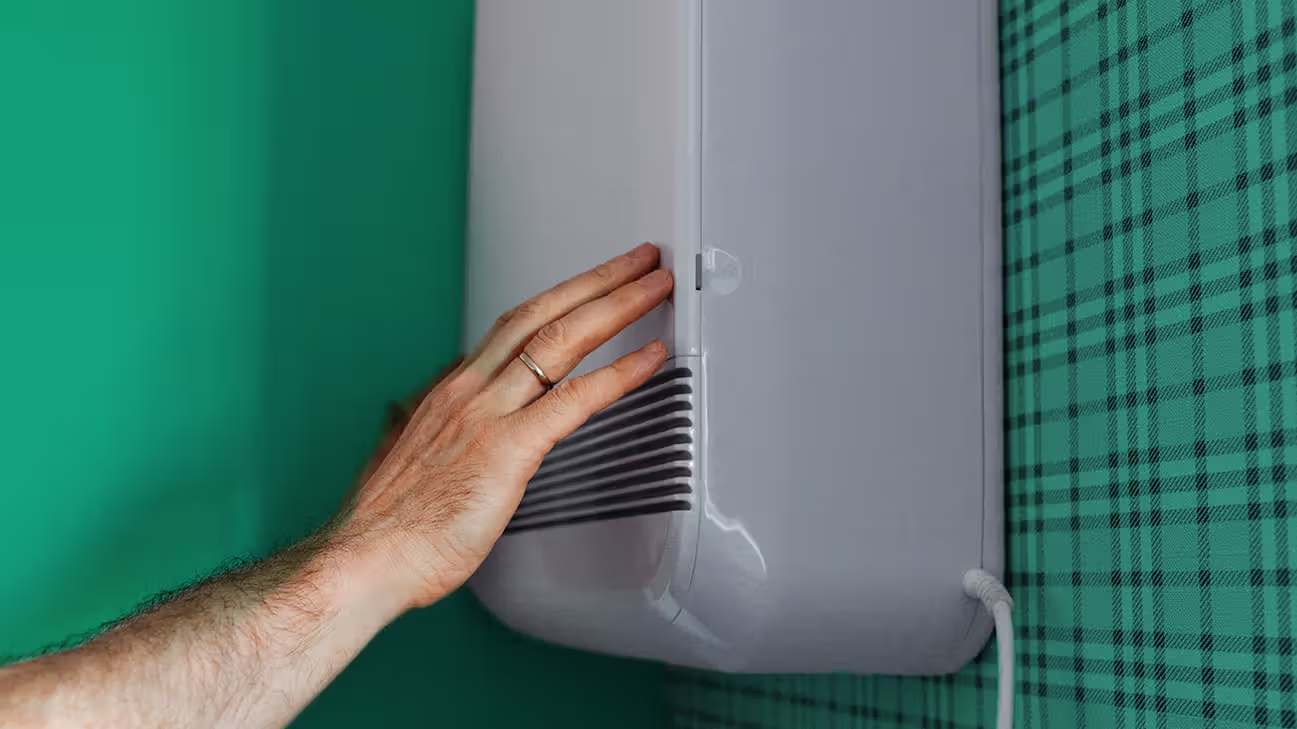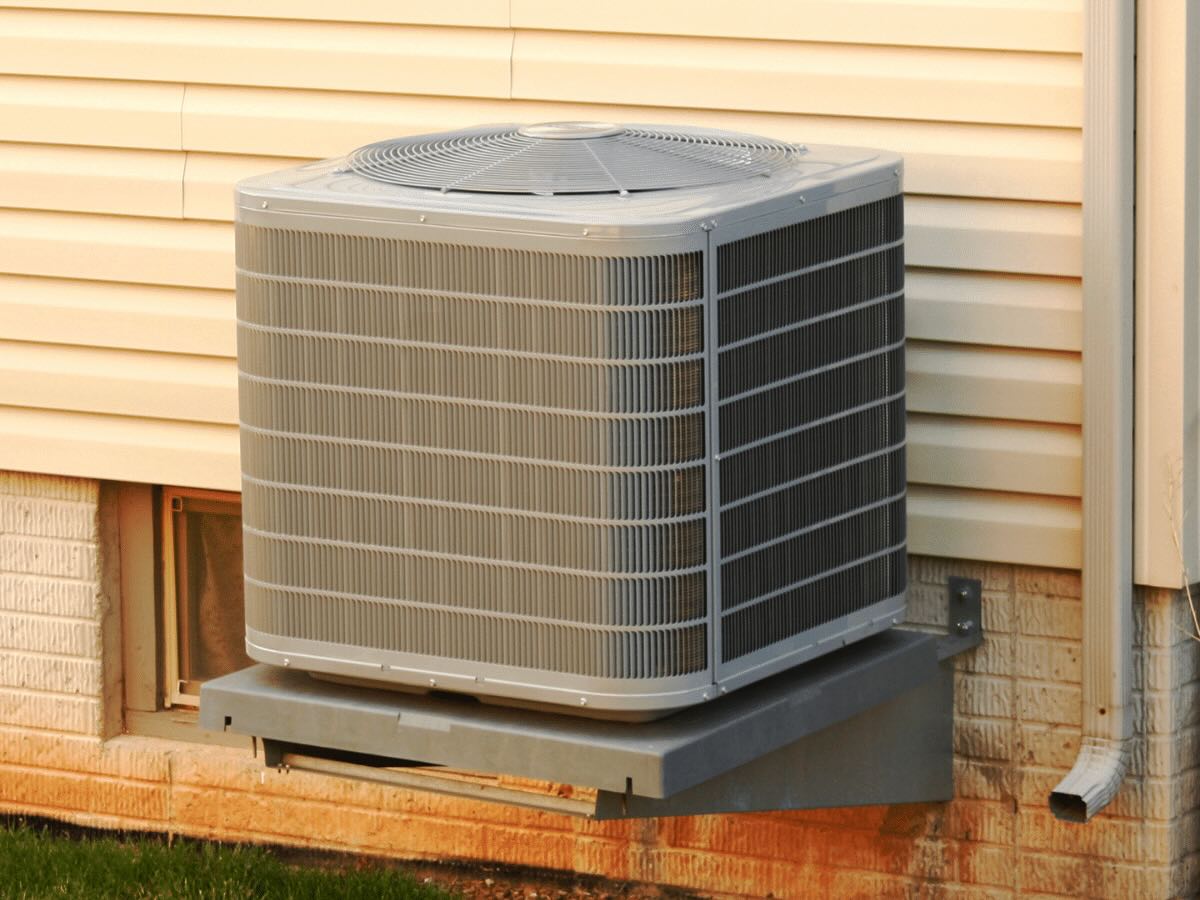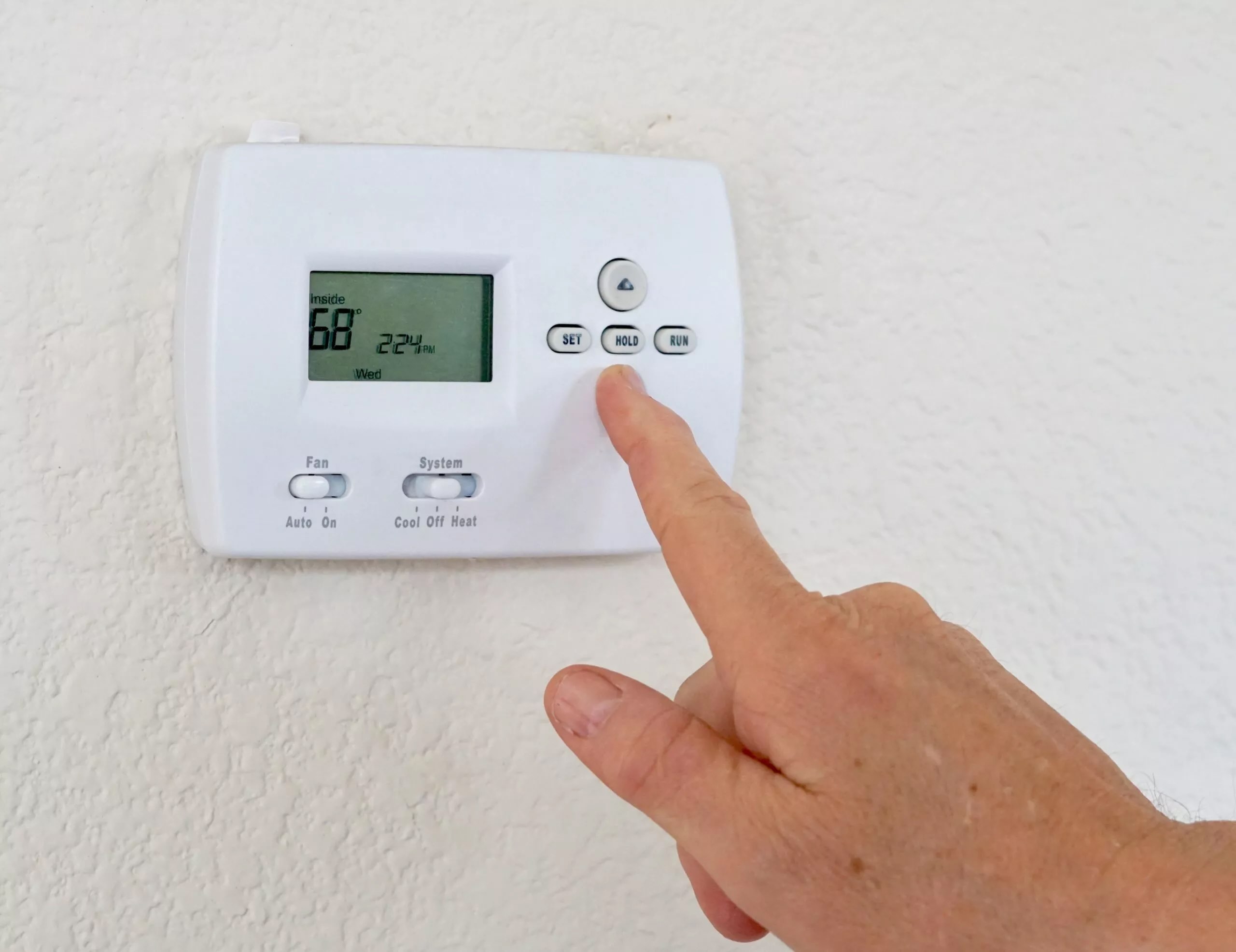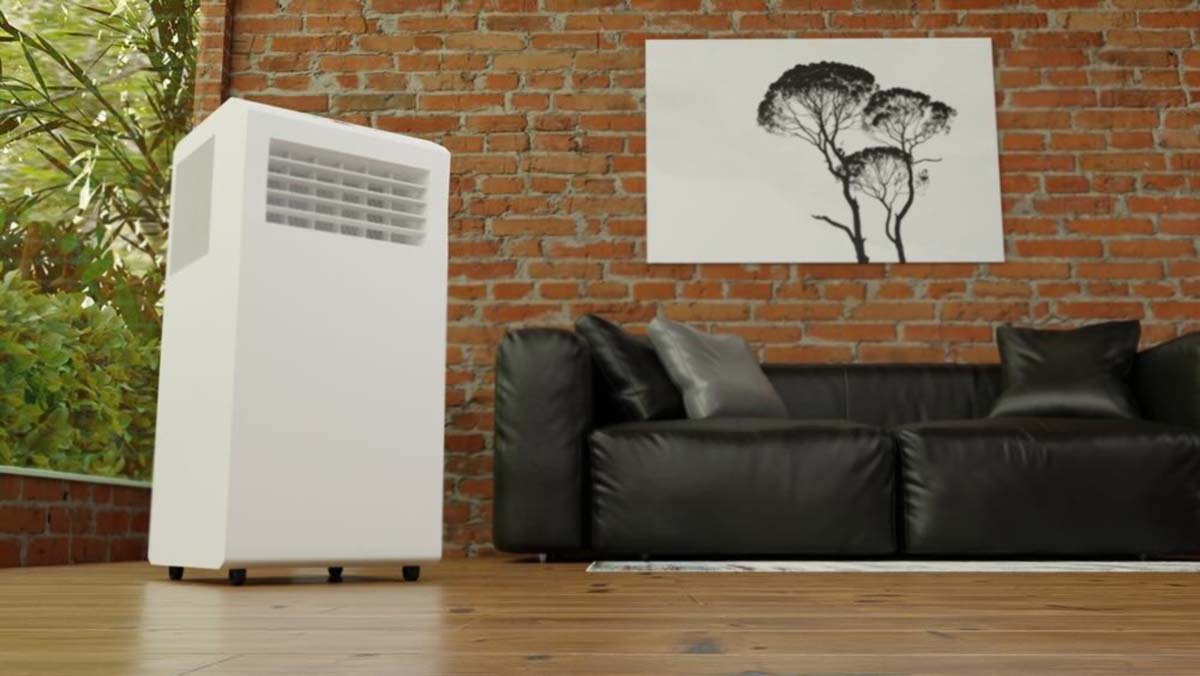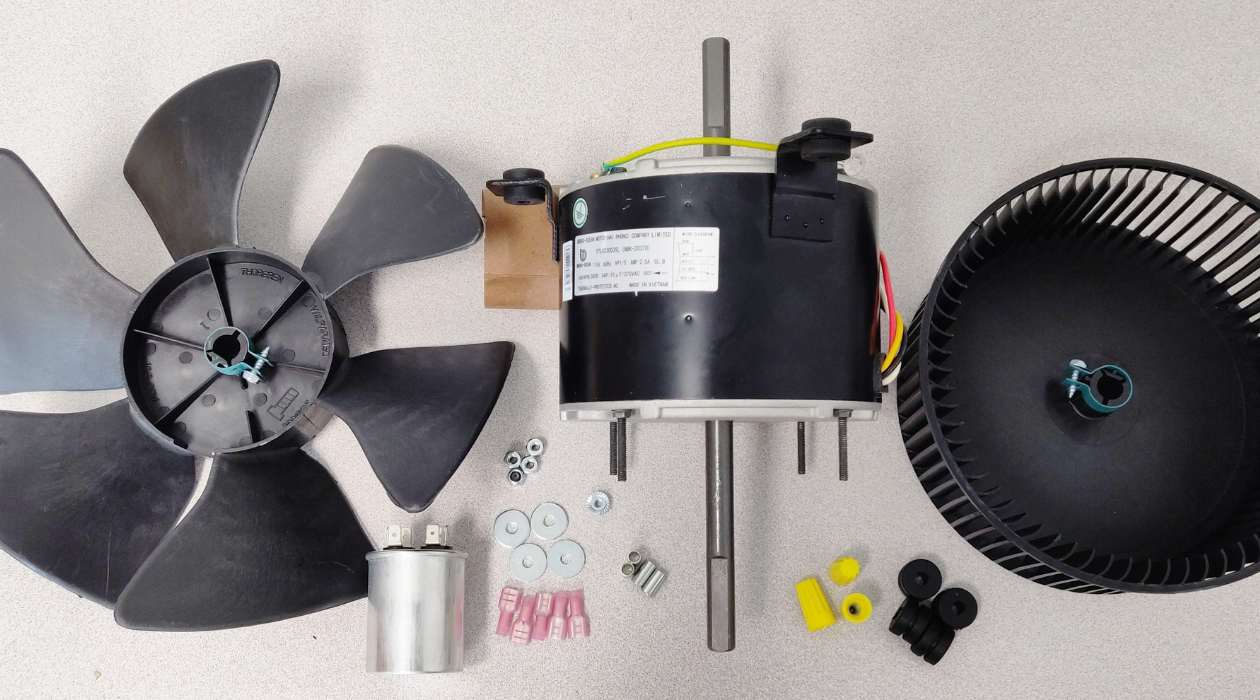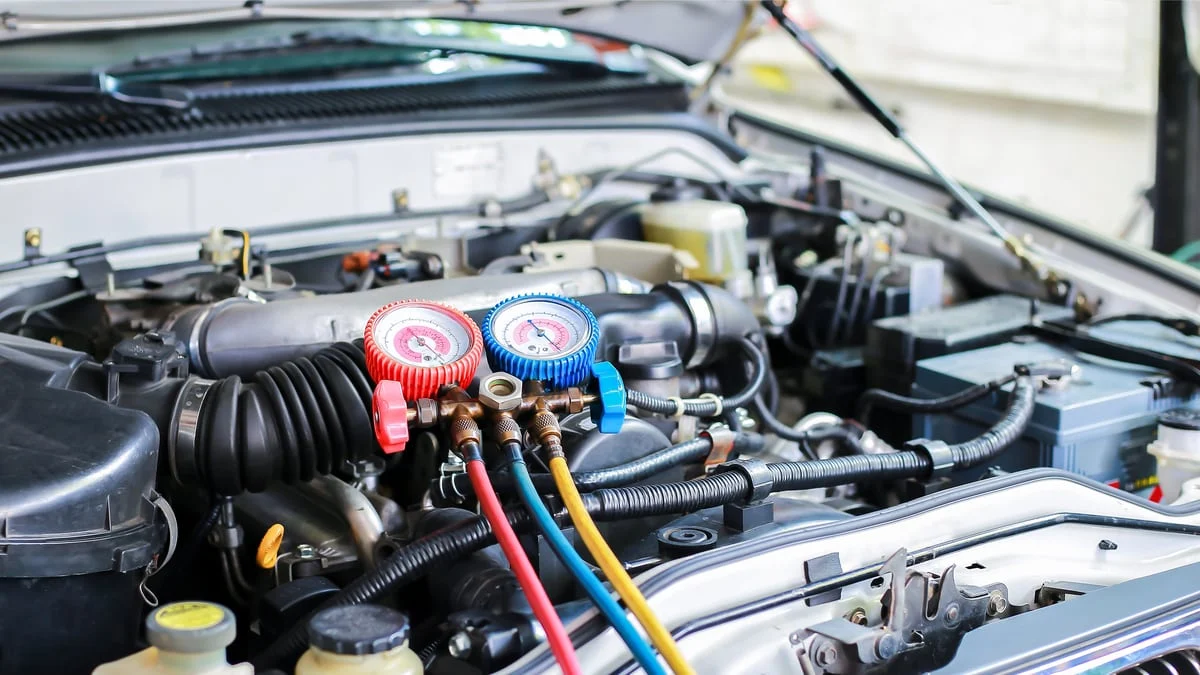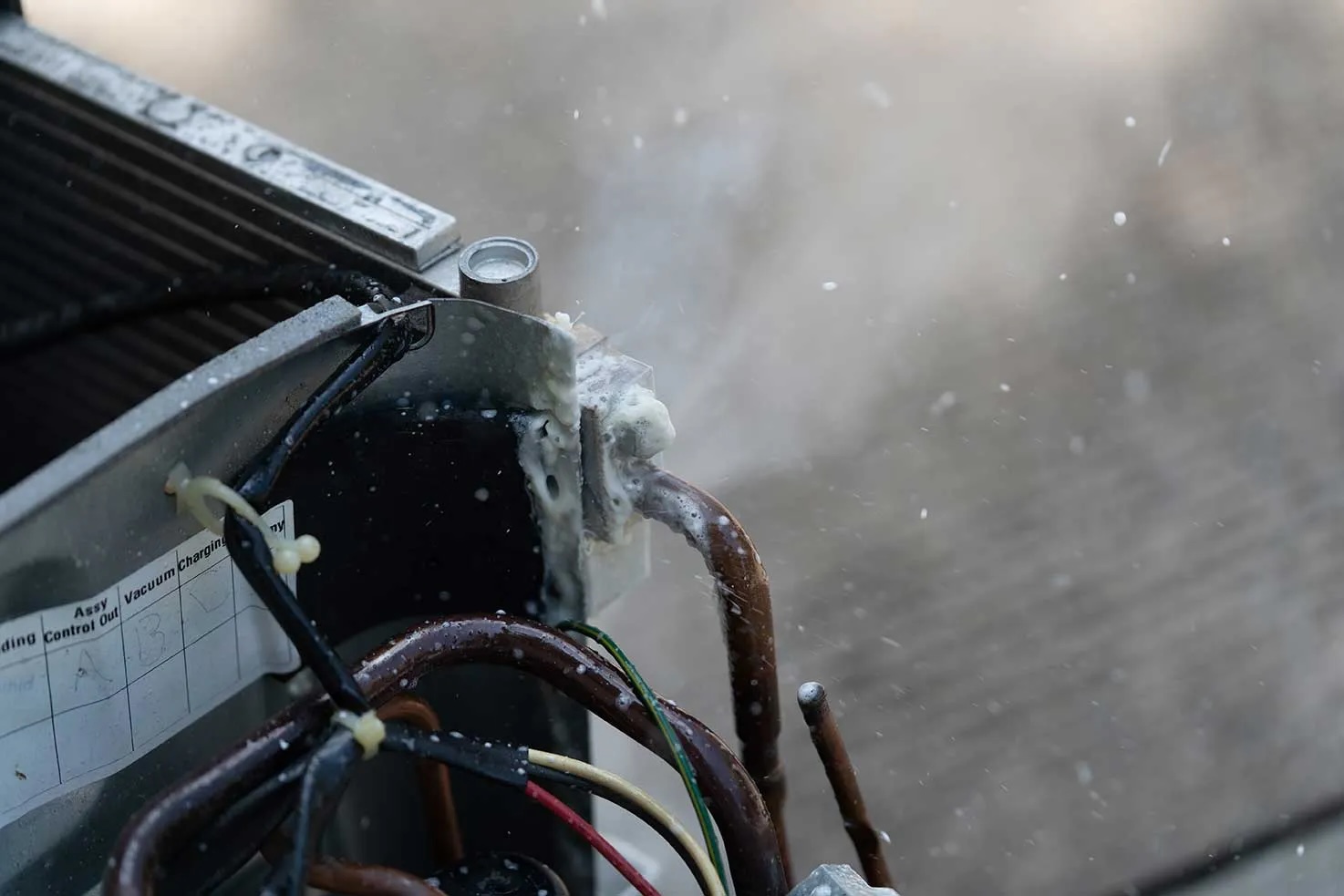Home>Home Maintenance>How To Fix An Air Conditioner Fan Not Working
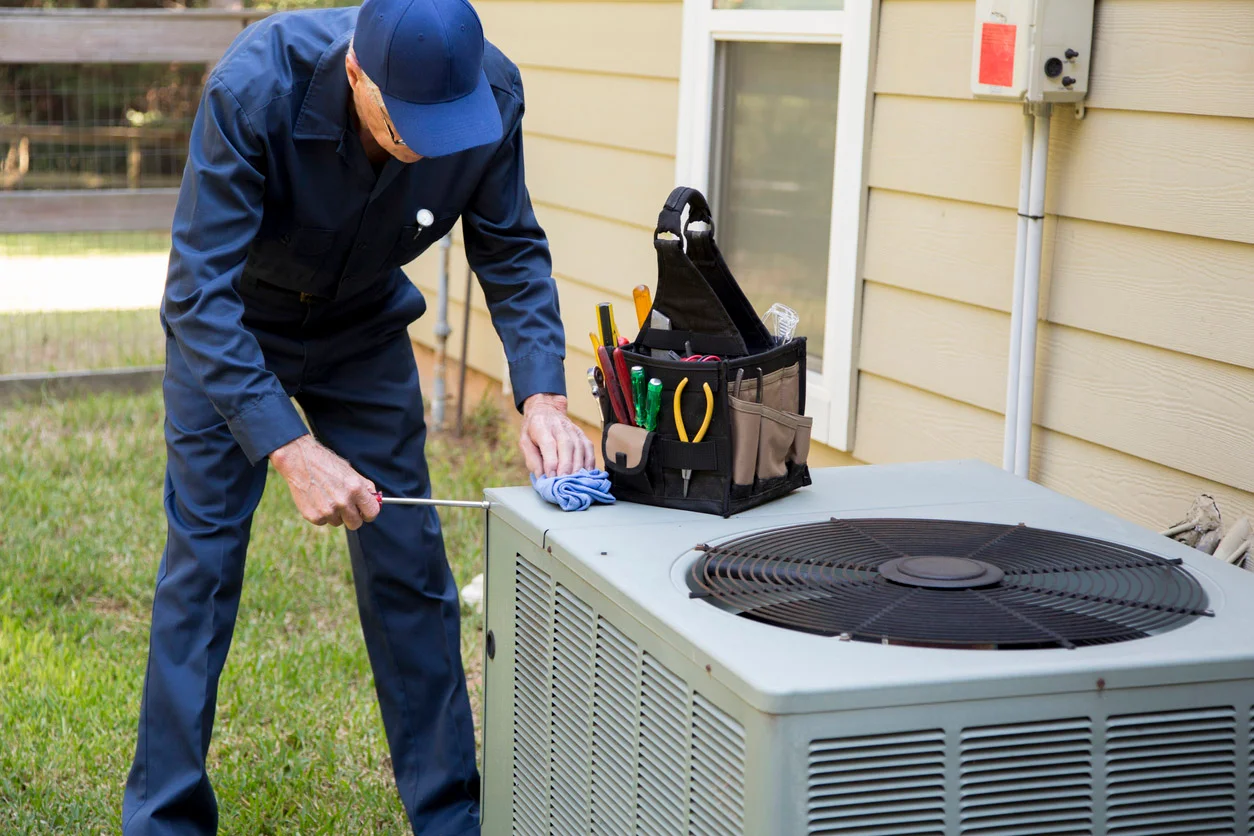

Home Maintenance
How To Fix An Air Conditioner Fan Not Working
Modified: March 24, 2024
Learn how to troubleshoot and fix a non-working air conditioner fan with our step-by-step guide. Ensure proper home maintenance by addressing this issue promptly.
(Many of the links in this article redirect to a specific reviewed product. Your purchase of these products through affiliate links helps to generate commission for Storables.com, at no extra cost. Learn more)
Introduction
Welcome to our comprehensive guide on fixing an air conditioner fan that is not working. In the scorching summer months, a dysfunctional air conditioner fan can quickly turn a comfortable living space into a hot and unbearable environment. The fan plays a crucial role in circulating cool air throughout the room, so it’s important to address any issues promptly and efficiently.
Air conditioner fan failure can occur due to various reasons, including power supply problems, faulty fan motor, dirty or damaged fan blades, electrical issues, and even wiring problems. Our aim is to provide you with step-by-step instructions to help you diagnose and fix the problem, enabling you to restore the comfort of your home or office.
Before we delve into the details of troubleshooting and fixing the fan, it’s essential to ensure your safety. Always remember to turn off the power supply to the air conditioner before attempting any repairs. If you are not confident in handling electrical components or if the problem seems complex, we highly recommend seeking professional assistance.
Now, let’s dive into the common causes of air conditioner fan failure and explore the step-by-step process of diagnosing and solving the problem.
Key Takeaways:
- Keep your air conditioner fan working by checking power supply, inspecting the fan motor, and cleaning or replacing fan blades. Regular maintenance and professional help can ensure a cool and comfortable environment.
- Troubleshoot and fix air conditioner fan issues by addressing power supply, motor, and electrical problems. Regular maintenance and professional assistance are key to preventing future malfunctions.
Read more: Why Is My Air Conditioner Fan Not Working
Common Causes of Air Conditioner Fan Failure
When your air conditioner fan stops working, it can be frustrating and disruptive to your daily routine. To effectively fix the issue, it’s crucial to identify the underlying cause. Here are some common causes of air conditioner fan failure:
- Power supply problems: The first thing to check is whether the fan is receiving power. Sometimes, a tripped breaker, blown fuse, or power outage can cause the fan to stop working. Inspect the circuit breaker or fuse box and reset or replace any faulty components.
- Faulty fan motor: The fan motor is responsible for spinning the fan blades and circulating air. Over time, the motor can become worn out or jammed, resulting in the fan not working. Inspect the motor for any signs of damage or excessive wear and consider replacing it if necessary.
- Dirty or damaged fan blades: Accumulated dirt, debris, or damage to the fan blades can prevent proper airflow and cause the fan to stop working. Inspect the blades for any obstructions or signs of wear and tear. Clean the blades using a soft brush or cloth, or replace them if they are damaged beyond repair.
- Electrical issues: Problems with the electrical connections can disrupt the power supply to the fan. Check for loose or disconnected wires and ensure that all connections are secure. If you notice any damaged or frayed wires, they will need to be repaired or replaced.
- Capacitor malfunction: Capacitors are responsible for providing the necessary electrical charge to start the fan motor. If the capacitor is faulty or worn out, it can prevent the fan from functioning properly. Testing the capacitor with a multimeter can help determine if it needs to be replaced.
- Relay failure: Relays act as switches to control the flow of electrical current. If a relay is malfunctioning, it can disrupt the power supply to the fan motor and cause it to stop working. Testing and replacing faulty relays can often solve the issue.
- Wiring problems: Faulty or damaged wiring can cause a disruption in the electrical circuit and affect the functioning of the fan. Inspect the wiring connections and look for any signs of damage, corrosion, or loose connections. Repair or replace any faulty wiring as needed.
By understanding these common causes of air conditioner fan failure, you will be better equipped to diagnose the issue and implement the appropriate solution. In the following sections, we will provide a step-by-step guide to help you address each of these causes and get your air conditioner fan back up and running in no time.
Checking the Power Supply
When dealing with an air conditioner fan that is not working, the first step is to ensure that the fan is receiving power. Here’s how you can check the power supply:
- Start by locating the circuit breaker or fuse box that controls the power supply to your air conditioner. It is typically found in the electrical panel of your home or building.
- Open the electrical panel and look for the breaker or fuse labeled for the air conditioner. In some cases, the breaker may have tripped or the fuse may have blown, causing the power to the fan to be cut off. If you notice a tripped breaker or a blown fuse, reset the breaker or replace the fuse with a new one of the same amperage.
- If the breaker or fuse appears to be fine, double-check that the air conditioner unit is plugged in securely. Sometimes, the plug may have become loose or disconnected, resulting in a loss of power. Make sure the plug is inserted correctly and test the fan to see if it starts working.
- It’s also worth checking if there’s a power outage in your area. Contact your local utility provider and inquire about any reported outages. If there is an outage, you will need to wait until the power is restored before the fan can start working again.
By checking the power supply, you can quickly determine if a simple power issue is causing the air conditioner fan to malfunction. If the fan still does not work after following these steps, proceed to the next section to inspect the fan motor.
Inspecting the Fan Motor
If checking the power supply didn’t resolve the issue, the next step is to inspect the fan motor. The fan motor is responsible for spinning the fan blades and circulating air throughout the air conditioner unit. Follow these steps to inspect the fan motor:
- Turn off the power supply to the air conditioner. This is crucial to ensure your safety during the inspection.
- Locate the fan motor, which is typically located near the condenser unit of the air conditioner. It may be covered by a protective housing.
- Visually inspect the fan motor for any signs of damage, corrosion, or excessive wear and tear. Look for loose or disconnected wires as well.
- Try spinning the fan blades manually. If they do not spin freely or if you notice any resistance or grinding sounds, it may indicate a problem with the motor.
- If the motor appears to be damaged or not functioning properly, it may need to be replaced. Contact a professional technician to assess the motor and recommend the appropriate solution.
Inspecting the fan motor will help identify any issues that may be causing the fan to malfunction. If the motor is in good condition and the fan blades spin freely, the problem may lie with the fan blades themselves. Proceed to the next section to learn about cleaning or replacing fan blades.
Cleaning or Replacing Fan Blades
Dirty or damaged fan blades can hinder the proper airflow and cause the air conditioner fan to stop working efficiently. Here’s how you can clean or replace the fan blades:
- Make sure the power supply to the air conditioner is turned off. Safety should always be a priority when working on any electrical component.
- Locate the fan blades, which are usually found behind a protective grille or cover. Remove the grille or cover to access the blades.
- Inspect the fan blades for any visible dirt, debris, or damage. Over time, dust and dirt can accumulate on the blades, reducing their ability to move air effectively.
- If the blades are dirty, use a soft brush or cloth to gently remove the dirt and debris. Be careful not to bend or damage the blades in the process.
- If the blades are significantly damaged or bent out of shape, they may need to be replaced. Consult the manufacturer’s instructions for your specific air conditioner model to find the appropriate replacement blades.
- Once cleaned or replaced, reattach the grille or cover securely.
Cleaning or replacing the fan blades can often solve the issue of a non-working air conditioner fan. The improved airflow due to clean blades or the installation of new blades should help restore the fan’s functionality. However, if the fan still does not work, it’s time to troubleshoot any electrical issues that may be causing the problem.
Read more: How A Portable Air Conditioner Works
Troubleshooting Electrical Issues
If the air conditioner fan continues to not work after checking the power supply and inspecting the fan motor and blades, it’s essential to troubleshoot any potential electrical issues. Here’s how to go about troubleshooting electrical problems:
- Ensure that the power supply to the air conditioner is turned off before proceeding. Safety should always be the top priority.
- Carefully examine the electrical connections, including wires, terminals, and connectors. Look for any loose or disconnected wires, as this can disrupt the flow of electricity to the fan motor.
- If you find any loose wires, reconnect them securely. It’s important to turn off the power supply before touching or reconnecting any electrical components.
- Inspect the wires for any signs of damage, such as fraying, melting, or burning. Damaged wires should be repaired or replaced to ensure proper electrical flow.
- Use a multimeter to test the continuity of the wires. This will help identify any breaks or faults in the electrical circuit and allow you to pinpoint the exact location of the issue.
- If you discover damaged or faulty wires, it’s recommended to consult a professional electrician to handle the repairs. They have the expertise and knowledge to safely address electrical issues.
Troubleshooting electrical issues can be complex, and it’s important to exercise caution when dealing with electricity. If you are not confident in your abilities or if the problem seems more intricate, it’s best to seek assistance from a qualified professional. They will have the necessary tools and expertise to diagnose and fix any electrical problems that may be causing the air conditioner fan to not work.
If the electrical components are in good condition and the fan still does not work, the next step is to check and replace the capacitors, which are responsible for powering the fan motor.
Check the power supply to the fan and make sure it’s getting electricity. If the power supply is good, the fan motor may need to be replaced.
Checking and Replacing Capacitors
Capacitors play a crucial role in providing the electrical charge necessary to start and run the fan motor. If the capacitors are faulty or worn out, the air conditioner fan may not function properly. Here’s how to check and replace capacitors:
- Ensure the power supply to the air conditioner is turned off to prevent any electrical accidents.
- Locate the capacitors, which are typically cylindrical in shape and located near the fan motor. There may be multiple capacitors, each designed for a specific purpose.
- Examine the capacitors for any signs of damage, such as bulging, leaking, or broken terminals. These are indications that the capacitors need to be replaced.
- To check the functionality of a capacitor, use a multimeter with a capacitance testing feature. Follow the manufacturer’s instructions for your specific multimeter to perform the test.
- If the capacitor readings are significantly lower than the specified value, it’s an indication that the capacitor is faulty and needs to be replaced.
- When replacing a capacitor, ensure that you choose a suitable replacement with the same capacitance rating and voltage specifications as the original capacitor.
- Carefully remove the old capacitor by disconnecting the wires and releasing any mounting brackets or clips holding it in place.
- Install the new capacitor, carefully reconnecting the wires and securing it in the same position as the previous capacitor.
- Finally, turn on the power supply and test the fan to confirm that it is now functioning correctly.
If you are unsure about checking or replacing capacitors, or if the issue persists even after replacing them, it is recommended to seek professional assistance. Capacitors are sensitive electrical components, and mishandling them can be hazardous or lead to further damage. A professional technician will have the expertise to accurately diagnose and resolve any capacitor-related issues.
If the capacitors are functioning properly, the next step is to test and replace any faulty relays that may be disrupting the power supply to the fan motor.
Testing and Replacing Relays
Relays are electrical switches that control the flow of current within a circuit. If a relay is defective or not functioning correctly, it can disrupt the power supply to the air conditioner fan, causing it to stop working. Here’s how you can test and replace relays:
- Ensure the power supply to the air conditioner is turned off to prevent any electrical hazards.
- Locate the relays, which are typically small rectangular or square-shaped components connected to the fan motor or control board.
- Inspect the relays for any signs of damage, such as melted plastic, burnt marks, or loose connections. These are indications that the relay may be faulty and needs to be replaced.
- To test the relay, you can use a multimeter set to the continuity or resistance mode. Follow the manufacturer’s instructions for your specific multimeter to perform the test.
- If the multimeter indicates an open circuit or infinite resistance, it means the relay is faulty and needs to be replaced.
- When replacing a relay, ensure that you select a suitable replacement with the same specifications, including voltage and current ratings.
- Carefully disconnect the wires connected to the faulty relay and remove it from its mounting location.
- Install the new relay by connecting the wires in the correct terminals and secure it in the same position as the previous relay.
- Once the relay is replaced, turn on the power supply and test the air conditioner fan to ensure its proper functioning.
If you are uncertain about testing or replacing relays, or if the issue persists after replacing them, it is advisable to seek assistance from a professional technician. They have the expertise and knowledge to accurately diagnose and address issues related to relays and other electrical components.
If the relays are in good condition and the fan still does not work, it is time to address any wiring problems that may be causing the issue.
Addressing Wiring Problems
Wiring problems can often be the cause of a malfunctioning air conditioner fan. Improperly connected or damaged wires can disrupt the electrical flow, preventing the fan from working effectively. Here’s how you can address wiring problems:
- Ensure the power supply to the air conditioner is turned off to avoid any electrical accidents.
- Inspect the wiring connections, including wires, terminals, and connectors. Look for any loose, disconnected, or damaged wires.
- If you find any loose wires, reconnect them securely to the appropriate terminals. It’s crucial to turn off the power supply before touching or reconnecting any electrical components.
- Examine the wires for any signs of damage, such as fraying, melting, or burning. Damaged wires should be repaired or replaced to ensure proper electrical flow.
- Test the continuity of the wires using a multimeter. This will help identify any breaks or faults in the electrical circuit and allow you to pinpoint the location of the wiring problem.
- If you discover damaged or faulty wires, it is recommended to consult a professional electrician to handle the repairs. They have the expertise and knowledge to safely address wiring issues.
- If the wiring connections appear to be intact and in good condition, it’s important to verify that the wires are connected to the correct terminals. Check the air conditioner’s wiring diagram to ensure the wires are properly connected according to the manufacturer’s instructions.
- When reconnecting wires, use proper wire connectors or terminal blocks to ensure secure connections.
- Once the wiring issues are addressed, turn on the power supply and test the air conditioner fan to ensure it is functioning properly.
Addressing wiring problems requires attention to detail and knowledge of electrical connections. If you are not comfortable working with wiring or if the problem seems complex, it is best to seek assistance from a professional technician.
If all the previous steps did not resolve the issue of the non-working air conditioner fan, it may be necessary to replace the fan motor itself.
Read more: How Does An Air Conditioner Work?
Replacing the Fan Motor
If all other troubleshooting steps have been followed and the air conditioner fan still does not work, it may be necessary to replace the fan motor. Here’s how you can replace the fan motor:
- Ensure the power supply to the air conditioner is turned off to avoid any electrical accidents.
- Locate the fan motor, which is typically located near the condenser unit of the air conditioner. It may be covered by a protective housing.
- Disconnect the wires attached to the fan motor. Take note of the wire connections or take a picture for reference during the installation of the new motor.
- Remove any mounting brackets or screws that secure the fan motor in place. Carefully detach the motor from the air conditioner unit.
- Take note of the make and model of the existing fan motor for accurate replacement.
- Obtain a new fan motor that matches the specifications of the existing motor. It’s essential to ensure compatibility to avoid any fitment or performance issues.
- Install the new fan motor by securely attaching it to the air conditioner unit using the mounting brackets or screws.
- Connect the corresponding wires from the new fan motor to their respective terminals. Ensure that the wiring connections are secure and properly aligned.
- Double-check all connections and ensure that the new fan motor is installed properly.
- Finally, turn on the power supply and test the air conditioner fan to confirm that it is now functioning correctly.
Replacing the fan motor can be a more challenging task compared to the previous troubleshooting steps. If you are not confident in your abilities or if you are unsure about the replacement process, it is highly recommended to seek assistance from a professional technician. They have the expertise and experience to safely handle motor replacements and ensure proper functionality.
By following these steps and addressing each potential issue, you can troubleshoot and fix an air conditioner fan that is not working. However, if the problem persists even after attempting these solutions, it is best to consult a professional HVAC technician who can diagnose and resolve the issue effectively.
Remember, proper maintenance and regular servicing are key to preventing future air conditioner fan problems. Keeping the fan and other components clean and in good condition will ensure optimal performance and extend the lifespan of your air conditioning system.
Conclusion
Dealing with a non-working air conditioner fan can be frustrating, especially during hot summer months. However, by following the troubleshooting steps outlined in this guide, you can effectively diagnose and fix the problem. Remember to always prioritize safety by turning off the power supply before attempting any repairs or inspections.
Throughout this guide, we covered common causes of air conditioner fan failure, including power supply problems, faulty fan motors, dirty or damaged fan blades, electrical issues, and wiring problems. By systematically checking each potential issue, you can narrow down the cause and implement the appropriate solution.
From checking the power supply and inspecting the fan motor to cleaning or replacing fan blades and troubleshooting electrical issues, we provided detailed steps to guide you through the process. Testing and replacing capacitors, relays, and addressing wiring problems were also covered. Finally, if all else fails, we discussed the option of replacing the fan motor itself.
It’s important to remember that if you are unsure or uncomfortable with any of the troubleshooting steps, seeking professional assistance is always a wise decision. HVAC technicians have the expertise and knowledge to accurately diagnose and fix complex issues, ensuring the safe and efficient operation of your air conditioner.
Regular maintenance and servicing are essential to keep your air conditioner fan and overall system in optimal condition. Cleaning or replacing air filters, clearing debris from the outdoor unit, and scheduling annual professional maintenance will help prevent future problems and extend the lifespan of your air conditioning system.
By following the steps outlined in this guide and maintaining your air conditioning system, you can ensure a comfortable and cool environment in your home or office, even during the hottest summer days.
Frequently Asked Questions about How To Fix An Air Conditioner Fan Not Working
Was this page helpful?
At Storables.com, we guarantee accurate and reliable information. Our content, validated by Expert Board Contributors, is crafted following stringent Editorial Policies. We're committed to providing you with well-researched, expert-backed insights for all your informational needs.
